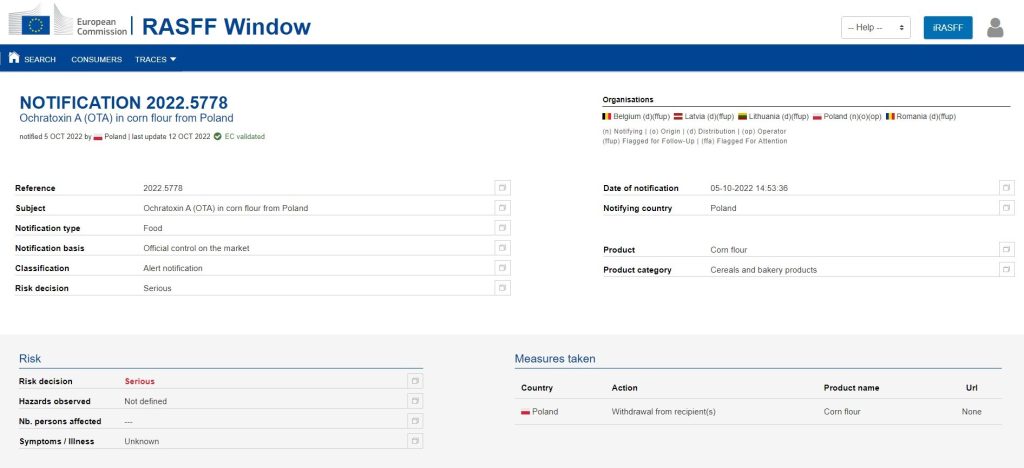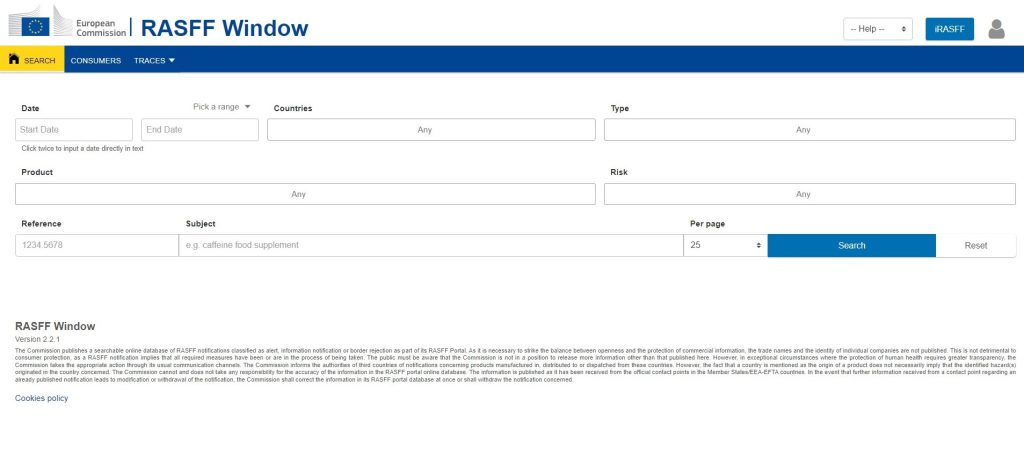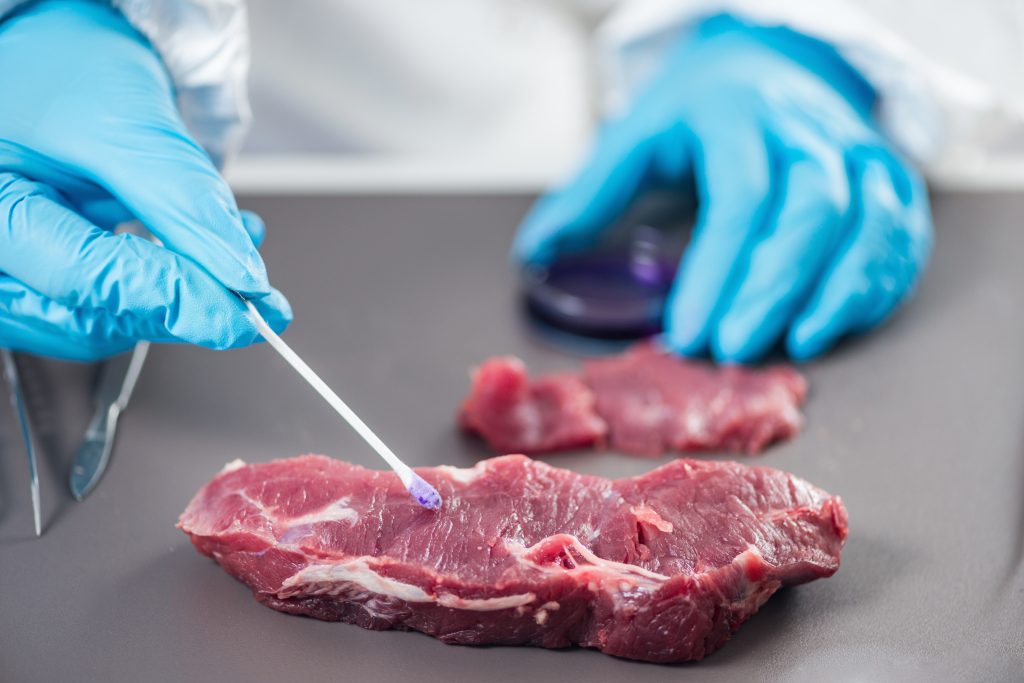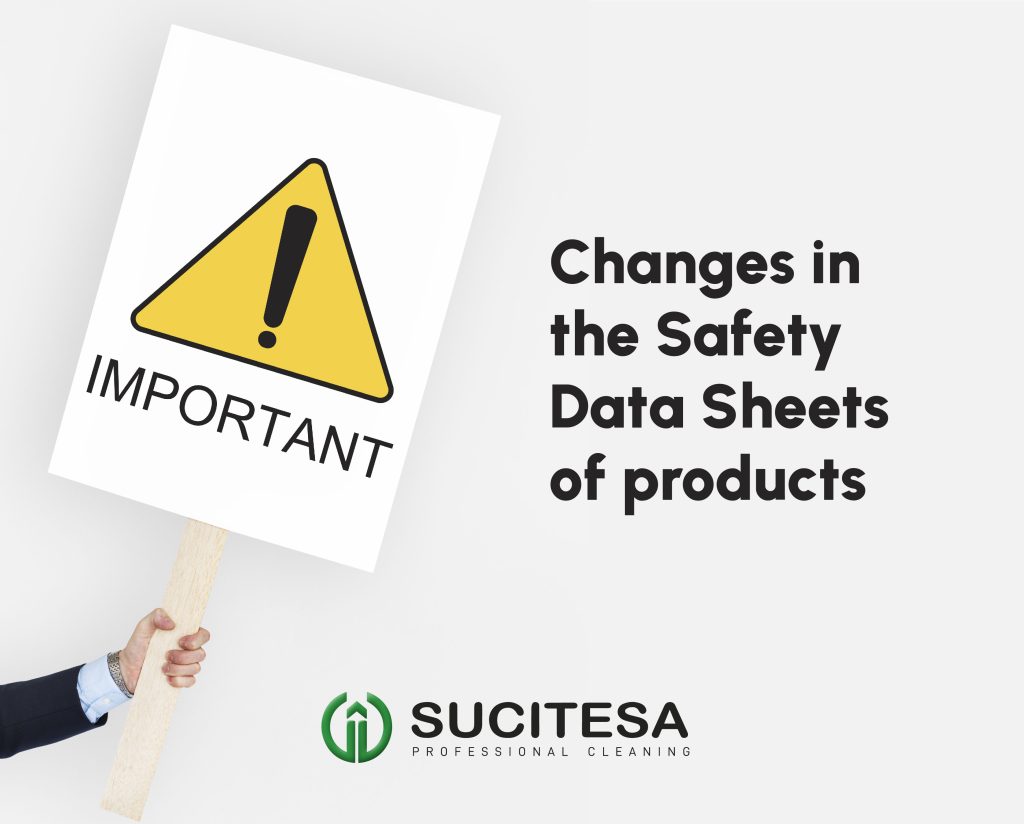In previous articles we have explained that food industries must comply with current regulations in order to ensure that the food they produce is safe for users. The Administration, through regular inspections, must check that companies comply and, therefore, users can consume these products safely.
What happens when a food industry or the administration detects that a food may put at risk to human or animal health?
When a hazard present in food enters the food chain, may put in risk health. In this case are coordinated reaction must be taken to remove the product and prevent it from reaching consumers.
In order to manage the risks of food to human health, the European Union has a food alert system based on Regulation EC 178/2022 and Regulation 16/2011 which establishes implementing measures for the Rapid Alert System for Food (RASFF).
How does the alert system work in Europe?
The RASFF was created in 1979 and allows efficient information sharing between its members (national food safety authorities of the EU Member States, Commission, EFSA, ESA, Norway, Liechtenstein, Iceland and Switzerland) and provides a 24-hour service to ensure that notifications are sent, received and responded in a collectively and efficiently well
All food alerts should be publicly available and recommendations to be followed in case of an affected batch are available on its website.
https://webgate.ec.europa.eu/rasff-window/screen/search
What types of notifications can be found?
(1) Notification of food alerts: they require or may require a rapid intervention
- Food alerts of allergens and other undeclared substances: these warn of the presence of certain ingredients or substances or products that may cause allergies or intolerances in some people.
- Food alerts of general interest: those that need to be made public because of their health impact or possible distribution to the final consumer.
(2) Information: not requiring rapid action.
(3) Border rejection: the product does not comply with the regulations.
(4) Novelties: a suspicion about a food or food contact material but not yet established as a cause.
(5) Notification of non-compliance: a situation where there is a suspicion that a food is non-compliant but the assistance of another member state is required to investigate and take the necessary measures.

What types of hazards exist?

- Physical hazards: notifications due to the presence of foreign bodies (glass, plastic, metal), defects or breakages in packaging. Notifications due to this type of hazard are generally rare.
- Chemical hazards: notifications due to the presence of additives, product composition, presence of plant protection products, phytosanitary aromatic hydrocarbons, veterinary drugs, heavy metals, migration of compounds from packaging to food and fungal toxins. Notifications due to chemical hazards are the most frequent, mainly due to unwanted presence of plant protection products followed by the presence of heavy metals.
- Biological hazards: notifications due to the presence of bacteria, biotoxins, viruses, fungi and yeasts, biological toxins (histamine) and parasites. The most abundant are notifications due to the presence of bacteria: salmonella, e-coli and listeria are the most common.
- Other hazards: this group includes hazards other than the above: illegal imports, unauthorised ingredients, genetically modified organisms, hygiene defects, labelling defects, etc.
As consumers, how should we handle a food alert?
When an alert situation arises, the competent authorities, in coordination with the company, quickly manage the communication and management of the alert according to its seriousness.
Logistics operators are informed so that they immediately withdraw the affected product and, in the event that the product may have reached consumers, effective information is provided on the reasons for the withdrawal of the product and how to proceed, including, if necessary, an information campaign in the media.
Thanks to our experience of more than 40 years in the professional hygiene and disinfection sector, SUCITESA helps professionals in the food industry so that our products remain safe for consumers.
Contact us if you have any questions







